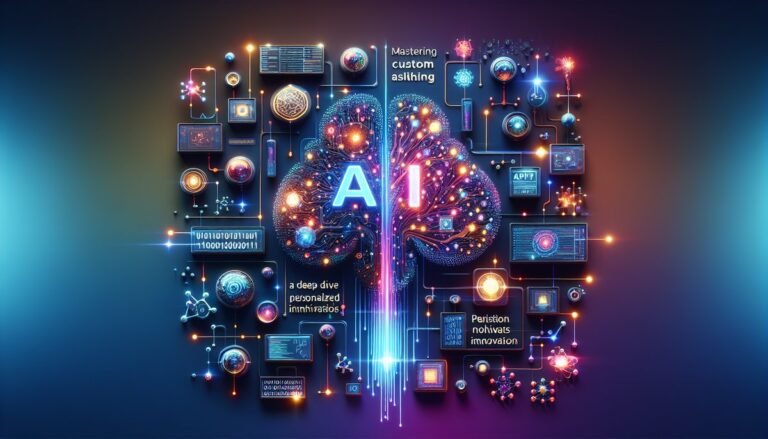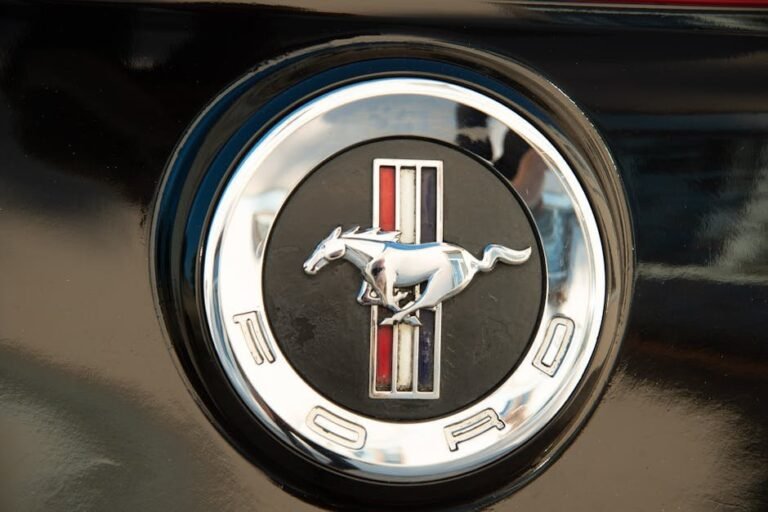In an era where the planet’s ecosystems face mounting threats from climate change, the emergence of Deep Learning Wildfire Forecasting represents a significant step forward in our ability to predict and manage natural disasters. For decades, wildfires have posed a formidable challenge, with traditional forecasting methods often struggling to keep pace with the dynamic nature of these infernos. Today, however, advancements in deep learning technology are reshaping our approach, offering a more accurate and dynamic solution to an age-old problem.
The Revolutionizing Impact of AI on Environmental Challenges
The advent of deep learning models in wildfire forecasting signifies not just an evolution in technology but a revolution in environmental management. Unlike conventional models that rely heavily on historical data and manual inputs, these sophisticated systems utilize complex algorithms capable of learning and evolving from vast datasets. By processing real-time data from satellite imagery, weather conditions, and topographical maps, they can predict fire behavior with unprecedented precision. This is not merely a technological leap; it’s a paradigm shift in how we address the growing threat of wildfires.
Beyond Traditional Methods: A New Horizon for Prediction
Traditional wildfire forecasting has often been likened to solving a puzzle with missing pieces. The dynamic nature of wildfires, influenced by factors such as wind speed, humidity, and vegetation type, makes accurate predictions challenging. However, the implementation of deep learning transforms this narrative. By integrating diverse data sources and applying neural networks, these models can anticipate fire spread patterns, enabling proactive measures to safeguard communities and ecosystems. This shift from reactive to proactive management marks an essential transformation in disaster preparedness and response.
Exploring the Mechanics of Deep Learning in Wildfire Forecasting
The mechanics behind deep learning wildfire forecasting are rooted in the principles of artificial neural networks. These networks mimic the human brain’s structure, allowing the system to learn and improve over time. By continuously analyzing and reanalyzing data, the model refines its predictions, offering insights that were previously unattainable. This capability to adapt and self-correct is crucial in an environment where conditions change rapidly and unpredictably.
Implications for Future Environmental Strategies
As these models continue to outperform traditional baselines, their implications extend beyond immediate fire prevention. They hold the potential to influence broader environmental strategies, including land management and urban planning. By predicting where and when wildfires might occur, policymakers can make informed decisions that reduce risk and enhance resilience. Furthermore, these tools can play a vital role in addressing the interconnected challenges of climate change, offering a blueprint for utilizing Artificial Intelligence in other environmental domains.
The journey of deep learning wildfire forecasting is just beginning, yet its impact is already evident. As research and development continue, these models promise not only to improve accuracy but also to transform how societies interact with and protect their natural environments. By harnessing the power of AI, we are not just forecasting the future of wildfires; we are actively shaping a more sustainable and secure world.
Revolutionizing Disaster Preparedness: The Role of Deep Learning in Wildfire Forecasting
With climate change fueling ever more frequent and severe wildfires, the need for precise wildfire forecasting has never been greater. Enter deep learning, a subset of Artificial Intelligence that harnesses complex neural networks to analyze massive datasets. Recent advancements in this field are transforming how we predict and respond to wildfires, surpassing traditional methods that often fall short in accuracy and timeliness.
Decoding the Mechanics: How Deep Learning Models Enhance Forecasting
At the heart of these advancements is the ability of deep learning models to process and learn from enormous volumes of data. Traditional forecasting methods typically rely on a limited set of variables, such as weather conditions and historical fire data. In contrast, deep learning models can incorporate an expansive array of inputs, including satellite imagery, topography, vegetation types, and even human activity patterns. By analyzing these diverse data streams, these models identify complex patterns and correlations that are invisible to conventional approaches.
For instance, a deep learning model might detect a subtle shift in vegetation moisture levels from satellite images that could indicate increased fire risk, even before such changes manifest in weather reports. This predictive prowess enables forecasters to anticipate potential fires with greater accuracy and provide early warnings to affected areas, ultimately saving lives and resources.
The Competitive Edge: Surpassing Traditional Baselines
In recent comparative studies, deep learning models have consistently outperformed baseline methods in wildfire prediction tasks. These baselines, often rooted in statistical models or simpler machine learning algorithms, struggle with the complexity and variability inherent in wildfire data. By leveraging advanced neural network architectures, deep learning models can adapt to these challenges, offering predictions that are both more accurate and temporally precise.
Consider a hypothetical scenario where a traditional model forecasts a high fire risk over a broad region based on generalized weather patterns. In contrast, a deep learning model could pinpoint specific areas within that region where the risk is most acute, based on nuanced data analysis. This precision not only enhances resource allocation but also focuses preventive measures more effectively, minimizing potential damage.
Harnessing Real-World Data: The Fuel for Deep Learning Wildfire Forecasting
One of the key strengths of deep learning models is their ability to learn from real-world data. As more comprehensive and high-resolution data becomes available, these models continually improve their forecasting capabilities. For example, advancements in satellite technology now provide near-real-time imagery that deep learning systems can analyze to detect anomalies indicative of wildfire risks.
Moreover, the integration of weather data from ground sensors and drones offers additional layers of information, further refining the model’s predictive accuracy. This dynamic learning process allows deep learning models to continually adapt to changing environmental conditions, making them an invaluable tool in the fight against wildfires.
Challenges and Future Directions in Deep Learning Wildfire Forecasting
Despite their impressive capabilities, deep learning models for wildfire forecasting are not without challenges. One significant hurdle is the availability and quality of data. In regions with limited technological infrastructure, the lack of high-quality data can impede the model’s effectiveness. Additionally, the computational resources required to train and deploy these models can be substantial, posing a barrier for widespread implementation.
Looking ahead, ongoing research and development aim to address these challenges. Efforts are underway to enhance data collection methods, improve model efficiency, and develop scalable solutions that can be deployed in diverse geographic and socio-economic contexts. Collaborative initiatives between governments, academia, and the private sector are also crucial in advancing these technologies and ensuring their accessibility.
Conclusion: Paving the Way for Proactive Wildfire Management
In summary, the integration of deep learning into wildfire forecasting represents a significant leap forward in disaster preparedness. By overcoming the limitations of traditional methods, these models offer more accurate, timely, and actionable insights into wildfire risks. As these technologies continue to evolve, they hold the promise of not only mitigating the impact of wildfires but also fostering a more resilient and informed approach to environmental management.
Ultimately, the success of deep learning in this arena underscores the transformative potential of AI-driven solutions in addressing some of the most pressing challenges posed by climate change and natural disasters.
Beyond the Flames: The Future of AI in Environmental Forecasting
In the realm of wildfire forecasting, the recent success of deep learning models marks a pivotal shift towards more accurate and reliable predictive capabilities. These models have demonstrated an ability to surpass traditional baselines, offering a glimpse into a future where Artificial Intelligence can significantly mitigate the devastating impacts of wildfires. By analyzing vast datasets that include weather patterns, topography, and historical fire data, deep learning models are providing unprecedented insights that enhance our predictive accuracy.
The implications of this breakthrough extend beyond just wildfire management. This advancement underscores the potential of AI to revolutionize our approach to various environmental challenges. From predicting climate change effects to optimizing resource allocation during natural disasters, AI’s role is becoming increasingly indispensable. It’s a clarion call for industries and governments to look beyond conventional technologies, embracing these innovative tools to safeguard our planet.
As we move forward, the integration of AI in environmental forecasting will likely expand, enabling more comprehensive and proactive strategies. Continued research and collaboration between technologists, environmental scientists, and policymakers will be crucial to harnessing AI’s full potential, ensuring a safer and more resilient future for all.
What makes deep learning models effective in wildfire forecasting?
Deep learning models are effective due to their ability to process and analyze complex datasets, identifying patterns and correlations that traditional models might miss. They leverage vast amounts of historical and environmental data to improve the accuracy of predictions, helping to anticipate wildfire occurrences more reliably.
How do deep learning models compare to traditional forecasting methods?
Deep learning models outperform traditional methods by using advanced algorithms that can adapt and learn from new data over time. This allows them to continuously improve prediction accuracy, whereas traditional models may rely on static formulas or limited datasets.
What are the challenges in implementing deep learning for wildfire prediction?
Challenges include the need for large, high-quality datasets, computational resources, and the integration of AI insights into existing decision-making frameworks. Additionally, there’s a need for interdisciplinary collaboration to ensure that the models are both scientifically sound and practically useful.
How can AI improve environmental management beyond wildfire forecasting?
AI can enhance environmental management by optimizing resource allocation, predicting the impacts of climate change, and improving the response to natural disasters. Its ability to analyze complex datasets can lead to more informed decisions, ultimately contributing to more sustainable practices and policies.
Discover More AI Innovations in Action
- Ai Best Nba Players
- Ai Big Data Humanitarian Logistics
- Best Ai Text Generators 2025
- Perchance Ai Chat Story Generator 2025
- Ai Time Rich






